Thanks to Tonyjin for toolchain (https://github.com/tonyjih) Special Thanks to Pcercuei (https://github.com/pcercuei), Mthuurne (https://github.com/mthuurne) and opendingux (https://github.com/OpenDingux) for the original code base system.
- exFAT support, auto-resize internal sdcard, constant sdcard mount point, show version - 1.7.5 branch
- Add Esoteric as an optional launcher - 1.7.9 branch
- Suspend capability - 1.8.x branch
- Kernel update -2.x branch
- Modernize 3D APIs - 2.1.x
- HDMI support - 2.2.x
- Vulkan?? - Future
https://github.com/Ninoh-FOX/OpenRGH/releases/tag/1.7.9.2
https://github.com/Ninoh-FOX/OpenRGH/releases/tag/1.7.9.1
https://github.com/Ninoh-FOX/OpenRGH/releases/tag/1.7.9
https://github.com/Ninoh-FOX/OpenRGH/releases/tag/1.7.8.2
https://github.com/Ninoh-FOX/OpenRGH/releases/tag/1.7.8.1
https://github.com/Ninoh-FOX/OpenRGH/releases/tag/1.7.8
https://drive.google.com/file/d/13iNEBQlbFkueCSAsnWpv8cVGKJv8ihpX/view
https://drive.google.com/file/d/1kMVWTWTym6TfN3_nrM9N2QSFf2dUxxjp/view
- Optimized update opk script for that ckeck and repair boot partition.
- Fix frasher script, not more error segmentation fault, but now the flasher for opk time take about 15min, all is automatized, so you not need do nothing.
- Gmenu2x updated, now you can edit the opk icons, name, description and files filtre.
- Gmenu2x now can on/off the screen with the power button, not more "ghost wakeups". thanks to Rafa Vico (https://github.com/RafaVico)
- RG350 test updated, now you can see the sdcards free space. thanks to Rafa Vico (https://github.com/RafaVico)
- Updated Esotoric to the last version. Thanks to Podulator (https://github.com/podulator/esoteric)
- Optimized the first boot set partition and format file system, this no is rewhite anymore, only with flasher install.
- Optimized the check files in the boots.
- Optimized flasher install.
- Gmenu2X now has a Docs reader (txt) thanks to Rafa Vico (https://github.com/RafaVico)
- Gmenu2x now show the porcentage of the battery too.
- Gmenu2x can too now change the cpu of the console betweer MAX and MIN for save battery (for example for GBC emu)
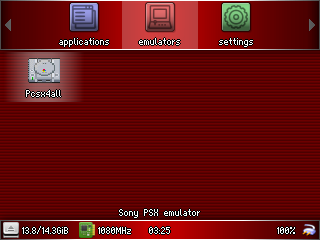
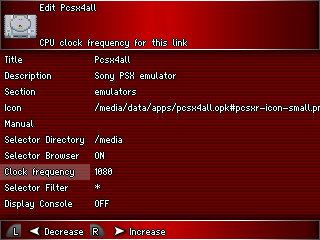
- Optimized kernel control in screen hz (thanks to pcercuei https://boards.dingoonity.org/retro-game-350rg-350/screen-now-going-bad/msg191784/#msg191784)
- Changed the boot logo (again), OpenDingux logo removed out of respect to the original creator of the system.
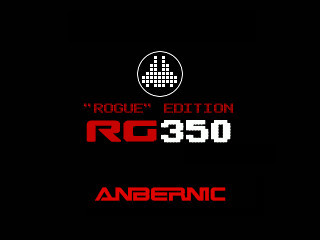
- All references to OpenDingux removed, except in the system information as thanks for the original base system.
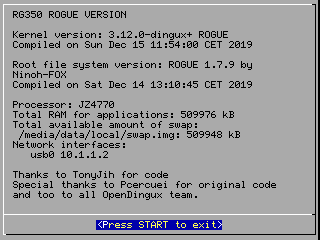
- Gmenu2x now read and write all from home.
- Esoteric added as an optional launcher in the system. (Thanks to Podulator https://github.com/podulator/esoteric).
- Updated the RG350Tests app in sd_image (thanks to https://github.com/RafaVico).
- Now sd_image too in .opk file, you can now reflash the sdcard without open the console (note: this erases everything on the internal sdcard).
- Now works with update and flash .opk files in another launchers as well.
- Changed boot logo.
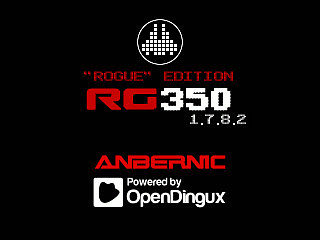
- New name for firmware.
- Updated some libs.
- Gmenu2x is now mounted in /local/home/.gmenu2x
- Boot partition is now mounted in /media/system in RW mode for recovering the system from a PC if possible.
- Gmenu2x can now link .opk and .dge files.
- New boot logo.
- New sdcard flash image (thanks to https://github.com/gcwnow/imager )
- lazy_itable_init = 0 and lazy_journal_init = 0 support added to EXT4 file system.
- Display version in System Info app.
- exfAT support added - no more need to download a utility to format 64GB+ SD cards
- Default SD card mount changed to /media/sdcard - No having to re-do paths when swapping SD cards
- Auto swap file and partition resize - This takes a while, allow it to finish. Progress will be shown on screen during first boot
- Duplicate modules removed from modules.squashfs
- Fixed the resize process in old stock firmwares (bad ext4 partition)
- Fixed power off and reboot error messages
- Fixed slowdowns and stuttering during first 15 minutes after first boot
- Rebuild mininit-syspart from original opendingux code. (Thanks to https://github.com/OpenDingux/mininit)
- Autoremove old configs of the system in the first boot.
- Change file system table.
- Restore USB-HID support.
- Update libshake from the original code: https://github.com/zear/libShake
NOTE: If is your first time installing this CFW, the file to use is sd_image.bin or flasher opk, afterwards you can use always use opks update files for future releases. Using the sd_image.bin or flasher opk erases all data on the sdcard!! If you're updating from another CFW you may want to make a backup of the folders local/home and local/app first to preserve emulators/apps, their settings, and your game saves.
- Place the update opk file in /media/data/apps or /media/sdcard/apps.
- Run from your preferred launcher.
- Allow process to complete.
- Reboot.
- If the system fails to boot, press Y to boot to the last working kernel, or X to boot to the last working rootfs. X+Y will load your previous OS version.
- Place the flasher opk file in /media/sdcard/apps.
- Run from your preferred launcher.
- Allow process to complete.
- Reboot.
- Download the base system "sd_image.bin" from the Releases page.
- Format the new sdcard / internal sdcard with SD FORMATTER 5.0.1 ( https://www.sdcard.org/downloads/formatter/ ) two times.
- Download Win32 disk imager ( https://sourceforge.net/projects/win32diskimager/ ) and flash (write) the FW base image to the sdcard.
4. DO NOT RESIZE THE EXT4 PARTITION IN WINDOWS OR LINUX!!
just put the sdcard inside the console and follow the on-screen instructions.
-
Format the new sdcard / internel sdcard with gnome-disk-utility.
-
Flash the FW base image in the sdcard with gnome-disk-utility. Or type in a terminal:
sudo dd if=sd_image.bin of=/dev/[sdcard mount point]
4. Not resize!! Just put the internal sdcard inside the console and follow the on-screen instructions.
thanks to https://github.com/gcwnow wiki
This works for GMENUNX.
You can copy the kernel or rootfs to the internal SD card of the RG350 using FTP, SFTP or SCP. I recommend SCP since it is just one line on the command prompt. It does require setting up SSH keypair authentication beforehand though.
for the kernel
scp vmlinuz.bin root@10.1.1.2:/media/system/
scp modules.squashfs root@10.1.1.2:/media/system/update_m.bin
for the rootfs
scp rootfs.squashfs root@10.1.1.2:/media/system/update_r.bin
Reboot the RG350 to activate the new kernel or rootfs. Don't use the reset button as part of the kernel or of the rootfs may not have been flushed from the write cache yet.
You can use:
ssh root@10.1.1.2 RG350:media/data/local/home# reboot
Una bifurcación independiente del proyecto OpenDingux, enfocada en mejorar la experiencia del usuario.
Gracias a Tonyjih por el toolchain (https://github.com/tonyjih) Agradecimiento especial para Pcercuei (https://github.com/pcercuei), Mthuurne (https://github.com/mthuurne) y opendingux (https://github.com/OpenDingux) por el codigo del sistema base.
- Soporte exFAT, auto-redimensionado, sdcard es montada siempre como sdcard, muestra de la version - 1.7.5 branch
- Agregar Esotérico como lanzador opcional - 1.7.9 branch
- Función de suspención real - 1.8.0 brach
- actualizacion del kernel -2.x branch
- actualizar 3D APIs - 2.1.x
- soporte HDMI - 2.2.x
- Vulkan?? - Future
https://github.com/Ninoh-FOX/OpenRGH/releases/tag/1.7.9.1
https://github.com/Ninoh-FOX/OpenRGH/releases/tag/1.7.9
https://github.com/Ninoh-FOX/OpenRGH/releases/tag/1.7.8.2
https://github.com/Ninoh-FOX/OpenRGH/releases/tag/1.7.8.1
https://github.com/Ninoh-FOX/OpenRGH/releases/tag/1.7.8
https://drive.google.com/file/d/13iNEBQlbFkueCSAsnWpv8cVGKJv8ihpX/view
https://drive.google.com/file/d/1kMVWTWTym6TfN3_nrM9N2QSFf2dUxxjp/view
- Optimizado el scrip del opk update para que checkee la particion boot tras hacer los cambios.
- Corregido el script del frasher, no mas errores de "segmentation fualt", pero ahora el flasheo por opk tomará un tiempo de unos 15min, todo esta automatizado, por lo que no necesitas hacer nada.
- Gmenu2x actualizado, ahora puedes editar los OPK, tanto nombre, descripcion, icono, manual y tipos de archivos.
- Gmenu2x ahora puede apagar y encender la pantalla con el boton power, no más "activaciones fantasmas". Gracias a Rafa Vico (https://github.com/RafaVico)
- RG350 test actualizado, ahora puedes ver el espacio libre en ambas tarjetas SD, gracias a Rafa Vico (https://github.com/RafaVico)
- Actualizado Esoteric a la ultima version. Gracias a Podulator (https://github.com/podulator/esoteric)
- Optimizado la creacion del sistema de particiones y de archivo en el primer arranque, este ya no se sobreescribirá más, solo con flasher.
- Optimizado el checkeo de archivos en los arranques.
- Optimizado la instalación por flasher.
- Gmenu2x ahora tiene Docs, un lector de TXTs, gracias a Rafa Vico (https://github.com/RafaVico)
- Gmenu2x ahora muestra el porcentaje de la bateria tambien.
- Gmenu2x puede cambiar ahora la frecuencia de cpu entre MAX y Min para ahorrar bateria (por ejemplo para GBC emu)


- Optimizado los Hz de la pantalla en el kernel (Gracias a pcercuei https://boards.dingoonity.org/retro-game-350rg-350/screen-now-going-bad/msg191784/#msg191784)
- Cambie el logotipo de arranque (de nuevo), elimine el logotipo de OpenDingux por respeto al creador original del sistema.

- Se eliminaron todas las referencias a OpenDingux, excepto en la información del sistema como agradecimiento por el sistema base original.
- Gmenu2x ahora lee y escribe todo desde HOME.
- Esoteric añadido cómo lanzador opcional en el sistema. (gracias a Podulator https://github.com/podulator/esoteric).
- Actualización de RG350test en sd_imagen (gracias a https://github.com/RafaVico).
- Ahora sd_imagen también en archivo opk, ahora puede actualizar la tarjeta sd sin abrir la consola (esto borra todo).
- Ahora funcionan las opks de actualizaciones y flashes en otros lanzadores.
- Cambio del logo de carga.

- Nuevo nombre del firmware.
- Actualizada algunas librerias.
- Gmenu2x ahora es linkeado en /local/home/.gmenu2x
- la particion boot ahora es tambien montada en /media/system en modo escritura, para poder recuperar la consola sin abrirla en caso de fallo dentro de lo posible.
- Gmenu2x ahora puede enlazar archivos .opk y .dge.
- Nuevo logo de carga.
- Nueva imagen de la tarjeta MicroSD (Gracias a https://github.com/gcwnow/imager )
- lazy_itable_init = 0 and lazy_journal_init = 0 se ha añadido al sistema de archivo del sistema ext4.
- Se muestra la version del sistema en System Info app.
- exFAT añadido - ya no es necesario decargar herramientas para formatear en FAT32 microsd de 64GB+.
- El directorio por defecto para la microsd es ahora /media/sdcard - ya no habra problemas con microsds con diferentes etiquetas.
- Modo automatico de expansion del las particiones de la sdcard y creacion de la memoria swap - esto puede tardar un poco, pero esta preparado para que solo suceda en el primer arranque tras actualizar si es necesario.
- Borrado modulos duplicados de modules.squashfs
- Corregido la expansion de particiones en stock firmwares viejos (las imagenes sd tienen mal el sistema ext4)
- Corregido mensajes de error al apagar o reiniciar
- Corregido relentizaciones que se producian tras los primeros 15min de que la consola estuviera encendida.
- Rehecho mininit-syspart desde el codigo original de opendingux (Gracias a https://github.com/OpenDingux/mininit)
- Removidas configuraciones residuales en el primer arranque.
- Cambiada el sistema de particiones.
- Resturado el soporto USB-HID (OTG).
- Actualizado libshake desde el codigo original: https://github.com/zear/libShake
Nota: Si es la primera vez que actualizas este firmware, lo idoneo es que uses el archivo sd_image.bin o el flasher opk, luego ya despues puedes seguir actualizando por opk. Impotante, sd_image.bin y flasher opk borra toda la sd, por lo que primero, y si vienes de otro FW tambien, es mejor que hagas copias de las carpetas /local/home y /local/apps antes de actualizar.
- Coloca el update en OPK /media/data/apps o /media/sdcard/apps
- Arranca OS Update desde Gmenu2x (actualmente no funciona en Gmenunx)
- Espera a que el proceso termine.
- Reinicia
- Si ves que el sistema falla al reiniciar, presiona Y para cargar el ultimo kernel que funcionó, o X para cargar el ultimo sistema de archivos que funcionó. X+Y para cargar la ultima version del sistema que funcionó. Esto es una carga temporar, pero te servirá para volver a intentarlo o para probar otro metodo de actualización.
- Coloca el flasher en OPK en /media/sdcard/apps
- Arranca Flasher desde el launcher que prefieras.
- Espera a que el proceso termine.
- Reinicia
- Descarga el sistema base "sd_image.bin" del release.
- Formatea la microsd interna o nueva con SD FORMATTER 5.0.1 ( https://www.sdcard.org/downloads/formatter/ ) dos veces.
- Descarga Win32 disk imager ( https://sourceforge.net/projects/win32diskimager/ ) y flashea (escribir) la imagen del cfw (sd_image.bin) en la microsd.
4. NO EXTIENDAS LA PARTICION EXT4 EN WINDOWS!!
solo pon la microsd dentro de la consola, enciendela y sigue las instrucciones.
-
Formatea la microsd interna o nueva con gnome-disk-utility. (da igual el formato)
-
flashea la microsd (reescribir imagen de disco) con gnome-disk-utility. O escribe en el terminal:
sudo dd if=sd_image.bin of=/dev/[punto de montaje de la microsd]
4. NO EXTIENDAS LA EXTENSION!! solo pon la microsd dentro de la consola, enciendela y sigue las instrucciones.
Gracias al wiki de https://github.com/gcwnow
Este metodo funciona tambien en GMENUNX.
Puede copiar el kernel o rootfs a la tarjeta SD interna del RG350 usando FTP, SFTP o SCP. Recomiendo SCP ya que es solo una línea en el símbolo del sistema. Sin embargo, requiere configurar la autenticación de par de claves SSH.
para el kernel
scp vmlinuz.bin root@10.1.1.2:/media/system/
scp modules.squashfs root@10.1.1.2:/media/system/update_m.bin
para rootfs
scp rootfs.squashfs root@10.1.1.2:/media/system/update_r.bin
Reinicie el RG350 para activar el nuevo kernel o rootfs. No use el botón de reinicio: parte del kernel o de los rootfs pueden no haberse eliminado aún de la caché de escritura.
Puedes usar el comando reboot:
ssh root@10.1.1.2 RG350:media/data/local/home# reboot

